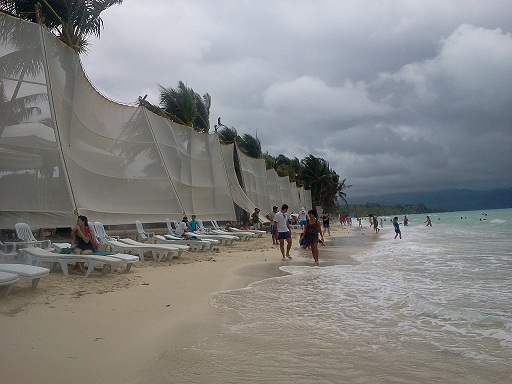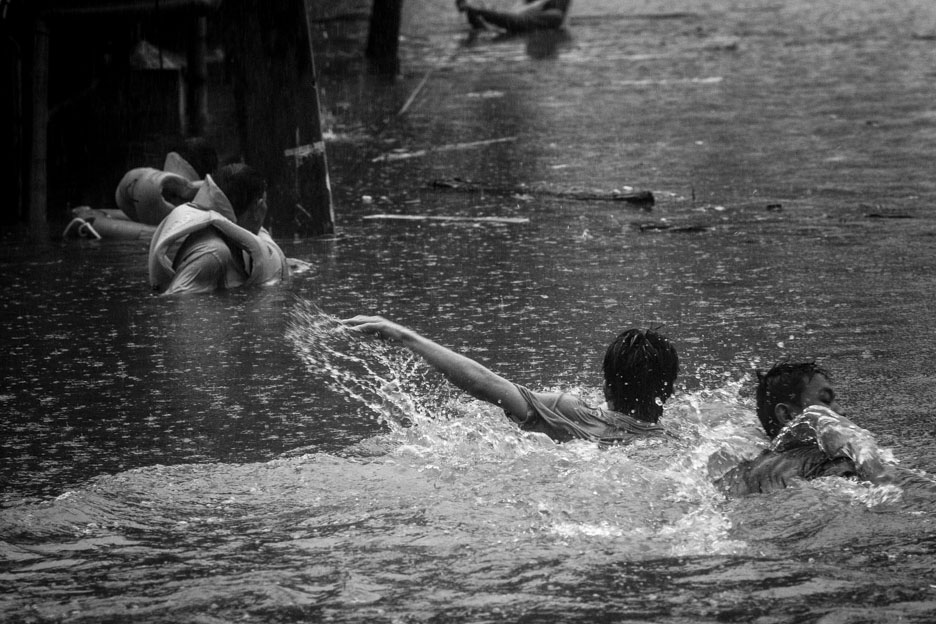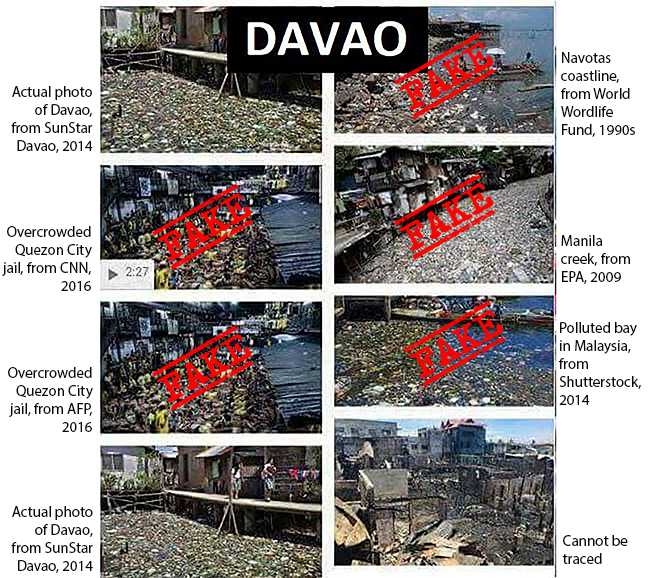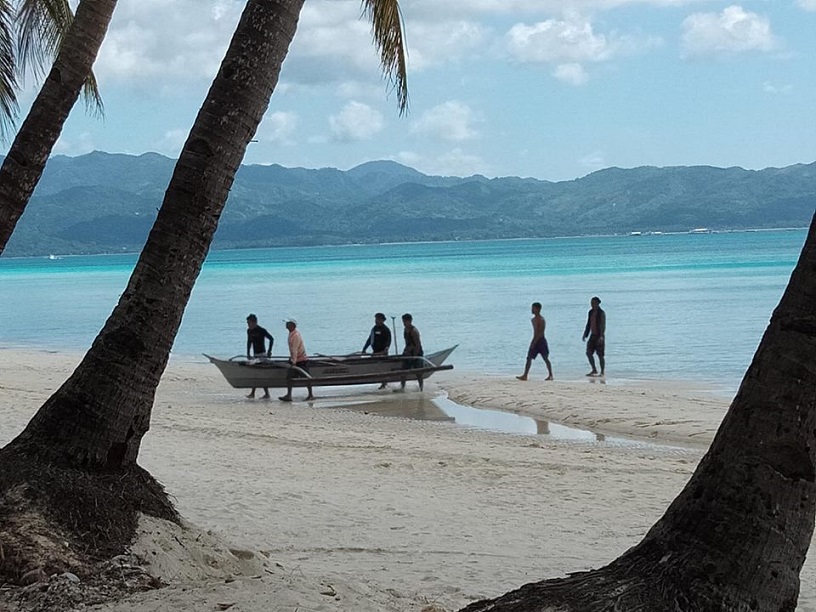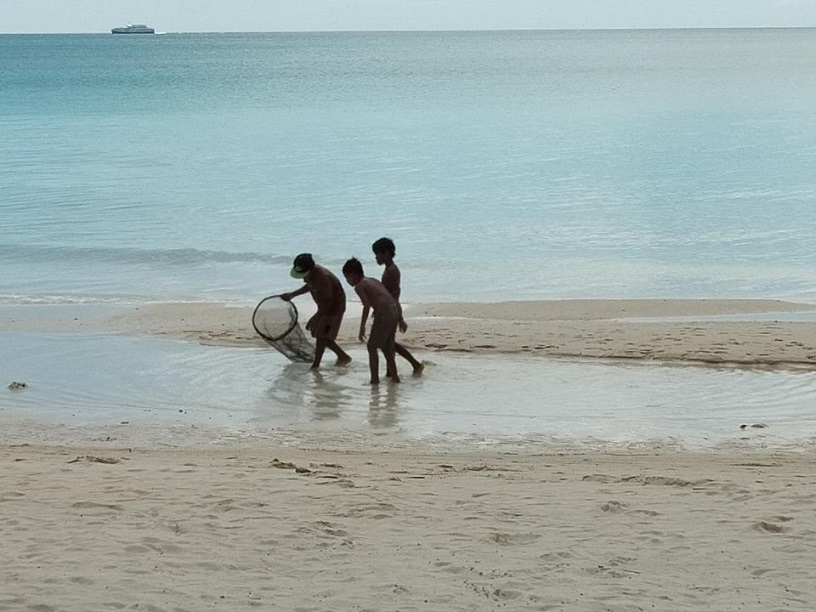By MYLAH REYES-ROQUE
FROM the sea, Boracay’s White Beach looks like it has curtains stretched along its shores. Up close, the curtains are actually nylon mesh screens stretched on metal or bamboo poles ten to 15 feet high and buried deep on the beach. Welcome to Boracay during the habagat season.
While most of Metro Manila residents evacuated from their homes at the height of the habagat floods in August, it was business as usual in Boracay. The mesh screens, or windbreakers, diffuse the strong monsoon winds blowing from the island’s western side where the four-kilometer stretch of white beach and hotel resorts is located.
The habagat season or southwest monsoon usually starts in June when strong winds start blowing from the west. In contrast, the amihan season or north east winds occur after October.
Michael Balista, an employee who keeps and maintains a covered beach lounge area of a hotel in Station 2, says the combination of habagat winds and Boracay’s powdery white sand can’t be underestimated. “Masakit sa balat ang flying sand, lalo na kapag tinamaan ka sa mata.(Flying sand are painful on the skin, much more on the eyes.)”
Joe Galvez, a waiter, says they want their guests lazing by the loungers to enjoy their cocktails, preferably not infused with sand. He says the winds are strong enough to blow sand into the hotel, causing mess at the very least, and at most, some damage to property. The winds are especially strongest at noon, which is why most restaurants by the beach set up their tables and chairs outdoors only during the night.
Boracay’s windbreakers rise in June and go down anytime between October and December, as soon as the winds shift, or when amihan replaces habagat.
Noel Jimenez, a Boracay resident whose family is among the first to develop a resort on the island, remembers that even then, the locals knew how to adjust to the habagat winds using more readily available materials. “Instead of today’s mesh screens, they used to put up coconut leaves sandwiched between bamboo poles in front of their houses. The screens are important because the winds are really strong.”
Aside from the windbreakers, habagat marks its presence through the strong waves that buffet the normally tranquil and shallow White Beach. The waves erode White Beach’s shores, reducing the beach front and sometimes exposing the foundation of some structures built so close to the beach.
Jimenez says the white sand eventually returns at the onset of amihan but he notes that sometimes they don’t. “There are many factors that we need to watch out for such as uncontrolled development, the destruction of corals, arbitrary construction of sea walls. All these erode Boracay’s sand.”
The windbreakers appear to be effective at protecting the tourists – and business – quite well. Caticlan jetty port administrator Niven Maquirang reports that tourist arrival figures in the third quarter of 2012 are up by 21 percent compared to last year’s figures – from 197,228 from June to August 2011 to 238,258 from June to August 28 this year.
Tourist arrival figures regularly drop in the third quarter as it is the country’s rainy season, but Maquirang notes there is still a substantial 35 percent increase in the first nine months of this year compared to a similar period last year.
“We are confident that we will surpass our one million target this year, We project we will hit 1.3 to 1.4 million tourist arrival in 2012.” With three more months to go, Maquirang says they are only less than 60,000 short of one million tourist arrivals. “We expect more in Christmas, the high-season in Boracay.”
Behind the rosy picture of Boracay’s tourism, however, a group of Boracay residents and business operators called The Boracay Foundation Inc. (BFI) is currently locked in a battle with Aklan’s provincial government over the latter’s project to reclaim 36.82 hectares in Caticlan and 3.18 hectares on Boracay Island.
The BFI went to the Supreme Court, insisting that the development would be harmful to Boracay’s ecology. On July 12, the Supreme Court stopped the provincial government from continuing the reclamation and ordered it to hold consultations with stakeholders and local government units. The high court also ordered the provincial government to conduct further studies on the effect of the reclamation to the environment.
On Aug. 31, the provincial government, represented by some members of the provincial board, held a consultation with stakeholders. According to Nenette Graf, chair of BFI’s Reclamation Committee, the local government officials showed the present condition of the project, the money spent and how much is owed to the developers. “The provincial government did not present any scientific study during the hearing,” Graf says.
